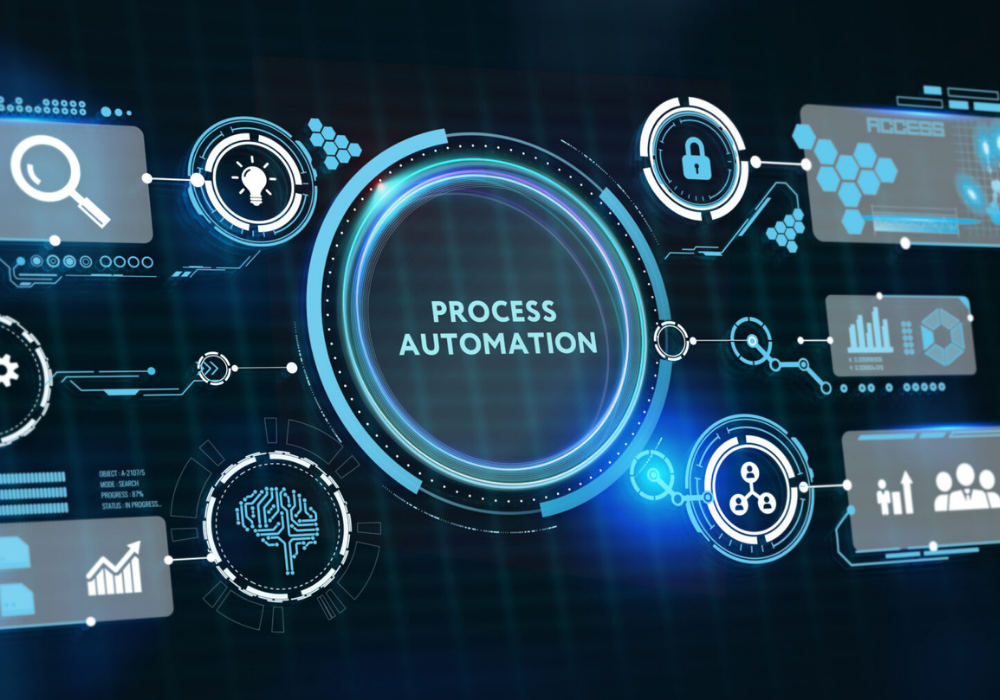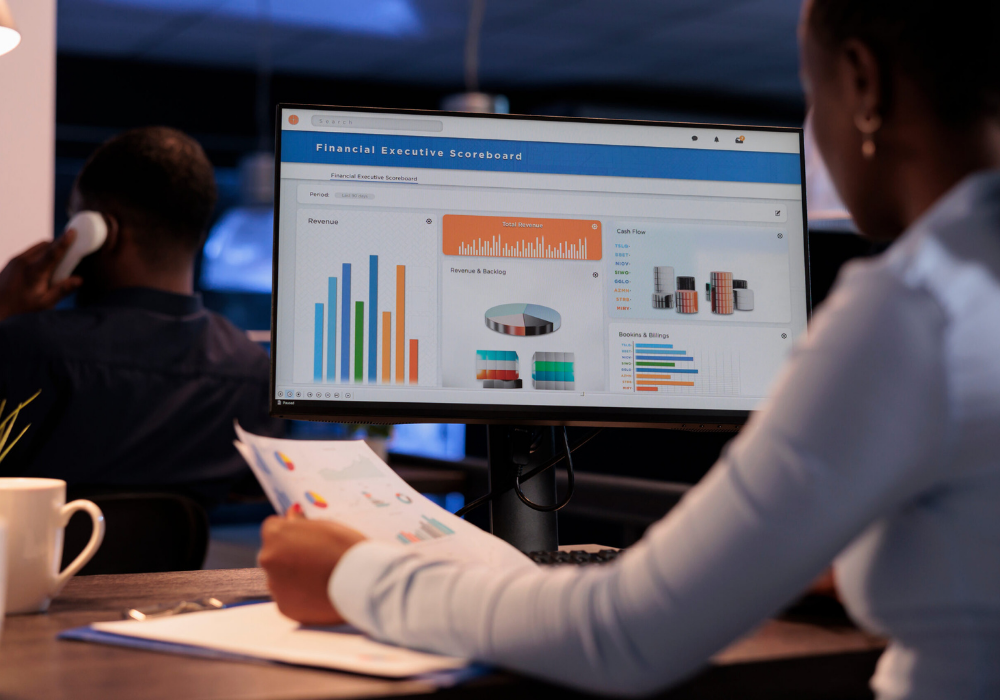RPA ROI: What Clients Actually Gained

RPA ROI: What Clients Actually Gained RPA in insurance is no longer a test project. It is part of daily operations. The question leaders ask now is simple. What are we getting back from it? Not hype, not theory, actual return. Insurers are using digital workers to run claims steps, update policies and renewals, handle onboarding flows, and prepare reporting packs. The result is faster turnaround, stronger cost control, and better client experience. This is already happening in mid-sized firms and in large carriers. RPA in insurance is driving measurable ROI across the value chain. Below is where the payback is real, and why it scales. Where ROI shows up first Claims are usually the first big win. Claim intake, validation against policy rules, fraud flag triggers, status updates, all of this can run on its own with full consistency. Faster claims mean less time spent in reserves. Less reserve time means better cash position. That lands on the balance sheet in a way leadership can see and defend. Policy admin is another early proof point. RPA in insurance routes structured data into live systems with high accuracy. Endorsements, renewals, cancellations, reinstatements, all pushed through instantly across core platforms. No queue. No backlog waiting for the month-end. Cost per task drops and stays low Once you build an automated workflow, the cost to repeat it stays low, no matter how often you run it. This is where most of the ROI sits. For one insurer, premium reconciliation tasks that took a full day now run end-to-end in minutes. The same work repeats every day. Output stays stable, even when volume spikes at quarter close. That is direct cost reduction, and it keeps compounding. This pattern shows up in claims, finance, and policy admin. The cost per task falls and stays down. Compliance stops being a deadline fight Regulatory reporting is one of the highest stress points in insurance. Reports must match strict formats, approved data sources, and tight submission windows. Penalties are not small. RPA can pull data from policy systems, claims systems, billing, and finance. It aligns that data, fills the templates, and prepares the final submission pack. Here is why that matters. The team does not need to pause normal operations to build the report. Reporting becomes routine, predictable, and always on time. That is not only an efficient win. It is a risky win. ROI scales across the business RPA in insurance rarely stays in one lane. After the first process shows a return, the same approach rolls into the next workflow. Then the next. The effect is not linear. It stacks. It starts with a single claims task. Then it grows into policy changes, then into reconciliation, then into compliance packs, then into broker updates. Within a few cycles, you are not saving a few hours. You are saving full work weeks across departments. Where are the biggest RPA wins right now? Claims intake and assessment Policy changes, renewals and endorsements Premium allocation and reconciliation Compliance reporting and audit packs Broker queries and status updates to clients Each one is rules-based, high-pressure, and time-sensitive. Each one is a strong first step for RPA in insurance. Book A Call This is not a theory deck. RPA is already running, live, inside insurers that want faster turnaround, lower cost per policy, and reliable reporting without month-end chaos. You do not have to rip out core systems to get there. SmartTechNXT builds RPA around the way you already operate. We find one high-impact workflow that can pay for itself fast; we launch that, then we scale. If you want to see where the quickest win sits in your business, Book A Call. We will map the process, show the projected ROI, and give you a rollout path you can present to leadership with confidence. Book A Call. We will help you pick the highest value workflow to automate first, outline the expected savings, and map a rollout plan you can take into your next meeting. FAQs Does RPA in insurance only work for large insurers? No. Mid-sized insurers and niche carriers can often see ROI faster, because they can move with less internal friction. RPA in insurance is not only for enterprise-scale. How fast can we see ROI from RPA? Most insurers see clear returns on the first live process within the first full billing or claims cycle after rollout. Cost per task drops straight away. Is RPA only for claims? No. Claims are common because of volume and pressure. But RPA also delivers strong results in policy admin, compliance reporting, finance, renewals, broker support, and client updates. Will RPA replace our core systems? No. RPA sits on top of your current systems and works with them. Keep your policy admin system, claims platform, finance tools, and reporting stack.
2025’s Biggest Automation Wins

2025’s Biggest Automation Wins RPA in 2025 is about predictable output, speed, and clean audit trails. It’s now entrenched in core functions such as finance, supply chain, service, and compliance; being fully integrated into daily workflows rather than sitting on the edge of operations. The strongest applications of RPA are paired with AI, rules, and approval logic. This gives consistent results with full visibility. No drama, no delays. The goal is simple. Get accurate numbers, faster turnarounds, and confidence in reporting. Below, we walk through where teams are winning, what changed in 2025, and how to unlock value in weeks, not months. Where RPA in 2025 Delivers Real Wins RPA in 2025 has evolved from basic task automation into full digital operations. The results show in cost control, timing, and reporting quality across business units. Financial close and reporting The month-end is no longer a scramble. RPA pulls ledger data, reconciles figures, builds standard packs, and prepares audit-ready trails. The impact is clear. Finance gets consistent timelines, cleaner numbers, and instant access to group-level figures. No waiting for updates. No chasing missing data. Supplier onboarding and compliance Procurement teams are using automation to collect supplier details, run checks, create vendor records, and move onboarding through approval. This removes onboarding delays, keeps supplier risk visible, and protects source-to-pay flow. This is not a test environment. This is live in everyday purchasing. Customer case handling and SLAs RPA in 2025 connects service channels directly to core systems. A new case comes in, gets classified, enriched with account data, prioritised, and logged with the correct tags. The result is a faster first response and tighter SLA control. Every action is captured for CX reporting, so service leaders get real-time visibility on backlog and turnaround. Regulatory proof Compliance pressure keeps rising. One of the most valuable applications of RPA is automated evidence capture. Every step of a process is logged, time-stamped and stored in line with policy. This makes the audit response fast and lower stress. It also reduces the cost of proving that rules were followed. AI + RPA: The 2025 Power Combo Automation in 2025 is not just about scripts. It is about smart decision support plus reliable execution. Here is how that works in practice: AI reads and interprets unstructured input like invoices, tickets, supplier forms, contracts, and PDFs. RPA takes that structured output and drives the next step in the core system with full logging. Exceptions move through clear decision routes based on business rules. This pairing keeps working and moving. It means automation no longer stops at data capture. It completes the full workflow. That is why RPA in 2025 is driving ROI for operations, finance, compliance, and service across multiple regions, not just in single-use case pockets. Where To Start You do not have to automate everything. You only need one high-volume workflow with clear rules and measurable turnaround time. Good first bets include supplier onboarding, invoice handling, payroll inputs, or customer ticket triage. These areas already run at scale and are easy to measure. That makes it simple to prove value, build support, and roll out phase two with confidence. Book A Call SmartTechNXT builds and supports digital operations on that scale. The process is simple. We map your current workflow. We isolate the drag. We design the automated path. You get a predictable result with a clear timeline and cost profile. You also get audit-friendly reporting from day one. If your goal is faster output, consistent delivery, and cleaner reporting, this is your next step. Book a call and we’ll show you the highest-value use case for your team, complete with real numbers behind it. FAQs What is RPA in 2025? RPA in 2025 is intelligent process execution. It applies business rules across systems and delivers repeatable output with full traceability, speed, and accuracy. Which teams see the fastest return from automation? Finance, procurement, service, and compliance see a fast return. These areas run on structured logic, repeatable activity, and strict SLA targets. What are the most valuable applications of RPA right now? High-value use cases include supplier onboarding, invoice capture, case triage, audit trail creation, and month-end reporting. These processes reach value fast because they follow a clear policy and scale across the business. Do I need AI to get value from RPA? Not always. Rule-based RPA on its own is strong in stable, well-defined processes. AI adds more reach. It can read unstructured data, extract what matters, and pass clean data to the bot. How is ROI measured? Track cycle time, SLA performance, compliance effort, and cost per transaction before and after rollout. If those metrics improve and stay consistent, the use case is delivered.
Low-code vs No-code: What Enterprises Need to Know

Low-code vs No-code: What Enterprises Need to Know As organisations continue to modernise their operations, the question of low-code or no-code has become central to digital transformation strategies. Both approaches promise faster delivery, reduced costs, and greater agility. Yet they serve different purposes and audiences. At SmartTechNXT, we help enterprises identify where each model fits within their wider automation roadmap, using a portfolio of leading low-code and no-code frameworks powered by technologies such as Ignxtion, ElectroNeek and Fortra Automate. What is Low-code Development? Low-code platforms accelerate software development by reducing the amount of manual coding required. They provide a visual development interface that enables users to drag and drop logic blocks, connect data sources and build applications quickly, while still supporting custom code where necessary. Low-code environments require some understanding of development logic, making them ideal for technical professionals who want to deliver complex solutions faster without losing flexibility. Benefits of Low-code Platforms Agility: Rapid prototyping and deployment enable swift adaptation to business or regulatory change. Scalability: Suitable for departmental workflows as well as enterprise-wide applications. Integration: Connects easily with ERP, CRM and finance systems via APIs and data connectors. Cost Efficiency: Reduces the resources and time needed for coding-intensive projects. SmartTechNXT helps organisations deploy low-code automation to orchestrate data flows, automate system updates and digitise critical workflows while maintaining full IT governance. What is No-code Development? No-code platforms take simplification a step further. They empower non-technical business users, such as operations managers, analysts or finance teams to build functional automations and applications without writing code. Instead of developer scripts, users work with visual templates and pre-built modules to configure processes that meet specific departmental needs. Benefits of No-code Platforms Accessibility: Empowers business teams to design their own solutions without adding to IT backlogs. Speed: Applications can be built and deployed in days rather than months. Lower Costs: Removes the need for specialist developers for routine process automation. Empowerment: Encourages innovation within departments while maintaining governance controls. No-code automation supports process democratisation by enabling business teams to automate repetitive tasks safely within enterprise frameworks. SmartTechNXT helps organisations implement and scale these capabilities effectively. Low-code vs No-code: The Key Differences While both approaches streamline development, they address different needs within an organisation. Feature Low-code No-code Primary Users Developers / IT professionals Business users / Citizen developers Technical Skill Needed Basic coding or logic knowledge None Customisation Level High – supports complex integrations Moderate – limited to templates and predefined connectors Use Cases Enterprise applications, system integrations, data workflows Departmental tools, task automation, simple data capture Scalability Ideal for large-scale, multi-system deployments Best for smaller, function-specific applications In essence, low-code is suited to complex, multi-layered workflows requiring flexibility, whereas no-code enables quick, business-led automation that delivers immediate results. How SmartTechNXT Bridges Both Worlds SmartTechNXT unites low-code flexibility with no-code simplicity across its automation frameworks.Built on proven RPA and orchestration technologies, our solutions allow IT teams and business units to automate structured, rule-based processes securely and at scale. Our ecosystem provides: Low-code design environments for developing sophisticated automation workflows and integrations. No-code modules for rapid process setup using guided templates. Centralised governance ensuring visibility, compliance and data security across all automations. This balanced approach allows enterprises to innovate confidently while maintaining full operational control. Choosing the Right Approach When evaluating low-code or no-code options, consider: The complexity of the workflows being automated. The skills and resources available within internal teams. The degree of integration and scalability required. Many SmartTechNXT clients begin with no-code solutions to remove immediate bottlenecks, then expand into low-code orchestration to connect systems enterprise-wide and drive greater efficiency. While low-code and no-code solutions can deliver rapid value, what often looks like a simple workflow may hide layers of complexity. Processes that seem straightforward at a high level can involve dependencies, exceptions, or approval steps that only become clear once you map them in detail. This is why it’s essential to work with an experienced automation partner who can help identify these hurdles early. The right foundation ensures your automation adds value, rather than introducing new inefficiencies. The principle of “garbage in, garbage out” applies here more than ever. Conclusion Low-code and no-code technologies are not competitors; together they redefine how enterprises modernise and automate. At SmartTechNXT, we partner with leading automation platforms to help organisations design, deploy and scale automation solutions that deliver measurable business impact. Speak to our automation specialists to explore how SmartTechNXT’s low-code and no-code frameworks can support your digital transformation goals. FAQs What is the main difference between low-code and no-code platforms? Low-code platforms require some technical knowledge and allow greater customisation, whereas no-code platforms enable non-technical users to build applications using visual tools and templates. Which approach is best suited for large enterprises? Low-code platforms typically offer the flexibility and integration depth needed for enterprise-scale automation, though many organisations combine both for maximum agility. Can no-code tools integrate with existing business systems? Yes. Most enterprise-grade no-code platforms include secure connectors and APIs that integrate with ERP, CRM and analytics tools, though low-code platforms provide broader customisation options. Does SmartTechNXT offer its own automation platform? SmartTechNXT provides access to multiple automation technologies, including Ignxtion, ElectroNeek and Fortra Automate, allowing clients to choose the platform that best fits their business size, infrastructure and governance requirements. How quickly can low-code or no-code solutions be deployed? Simple no-code automations can often go live within days. Low-code projects, which involve more complex integration and testing, may take several weeks depending on scope and system connectivity. What are common enterprise use cases for low-code and no-code automation? Typical examples include supplier onboarding, invoice processing, data validation, CRM synchronisation, approval workflows and compliance reporting.
Procurement in the Pit: Automating Vendor Onboarding

Procurement in the Pit: Automating Vendor Onboarding Mining procurement is complex. Vendors supply equipment, consumables, and critical services across vast operations. Every supplier must be onboarded, verified, and tracked. The challenge is that vendor onboarding is often slow, paper-heavy, and prone to delays. Missing documents, repeated checks, and manual data entry create bottlenecks. These delays affect projects, contracts, and compliance. Robotic Process Automation, or RPA, solves this by digitising and connecting each step. It validates documents, updates systems, and triggers approvals automatically. Procurement teams gain speed, consistency, and transparency. Suppliers get a smoother onboarding experience. This is where RPA in mining procurement delivers real results at the coalface of supply chains. The vendor onboarding problem Many operations depend on hundreds of suppliers. Each one must pass through compliance checks, contract reviews, and safety clearances. Vendor master data must be accurate and complete across finance, ERP, and procurement systems. Manual handling slows the process. Teams chase paperwork. Critical suppliers wait weeks before they can be engaged. This creates risk and slows down operations. Why RPA is a fit for procurement RPA is built for structured, repeatable workflows. In vendor onboarding, it captures vendor data, validates it against rules, and checks compliance lists. It updates ERP, procurement, and finance systems in parallel. It routes contracts for approval. It triggers notifications or reminders for missing information through connected communication systems. It generates audit-ready trails of each action. This is why companies are turning to RPA. It standardises vendor onboarding, cuts delays, and strengthens control. For procurement, RPA removes barriers that keep suppliers from starting work on time. Who benefits from automated onboarding Procurement teams reduce their manual workload. Finance teams see accurate vendor data from day one. Compliance managers gain confidence that suppliers meet standards before engagement. Operations avoid costly delays. Vendors also benefit, with clearer instructions and faster approval. SmartTechNXT delivers automations that support all of these stakeholders without disrupting existing procurement platforms. The SmartTechNXT approach Our automation design follows a proven flow: Data capture: Vendor details entered through digital forms or uploaded from portals. Validation: Bots check tax, banking, certification, and safety documents. Integration: Systems such as ERP, finance, and compliance platforms are updated instantly. Matching: Automation can also match dispatch notes and purchase orders to vendors, simplifying the invoicing and reconciliation process. Approval routing: Contracts are sent to the right approvers with reminders and escalations. Communication: Vendors automatically receive status updates and document requests through connected systems. This ensures onboarding is consistent, transparent, and fast. Built for business environments Our RPA solutions handle multiple jurisdictions, document standards, and approval chains. Offline-first capabilities support remote operations. Encryption and role-based controls protect sensitive supplier data. Audit trails make it easy to prove compliance during internal or regulator reviews. Impact of automation With RPA in procurement, onboarding time drops from weeks to days. Supplier data is cleaner and consistent across systems. Contracts move through approvals without delays. Teams spend less time chasing paperwork and more time managing supplier performance. Risks from non-compliant vendors are reduced. Operations run smoother with the right suppliers in place when they are needed. From pilot to scale We begin with a discovery session to map current onboarding steps. We identify bottlenecks and high-impact opportunities. A pilot automation is then delivered to one part of the procurement flow. Once proven, the solution scales across sites and regions. SmartTechNXT supports rollout, training, and optimisation. Each step is designed for measurable outcomes. Book a call today. We will review your current vendor onboarding process, show where automation adds value, and build a plan for measurable results. FAQs What is RPA in procurement? It is the use of automation bots to handle structured onboarding steps. Bots capture vendor details, validate documents, update systems, and manage approvals. How does RPA validate vendor documents? RPA checks tax, certification, and banking details against predefined rules and databases. It flags missing or invalid information and alerts procurement teams. Does RPA integrate with ERP and finance systems? Yes. Bots connect directly with ERP, procurement, and finance platforms. They ensure vendor data is consistent across all systems. How does automation improve compliance? Every step is logged with time stamps and approvals. Document validation rules prevent vendors from being onboarded without meeting standards. This strengthens compliance and audit readiness. How fast can vendor onboarding be automated? A pilot process can often be delivered within weeks. Full rollout timelines depend on the number of systems and vendor categories involved.
Embedded Automation: Untapped Potential

Embedded Automation: Untapped Potential Embedded automation is no longer just a niche concept. It’s quickly becoming central to modern technology. It bridges various technologies and systems, making processes more efficient and streamlined. SmartTechNXT is at the forefront of this revolution, offering unique solutions that empower businesses to harness the embedded automation potential fully. Understanding Embedded Automation Embedded automation refers to integrating automated processes within a device or system, often utilising microcontrollers. This type of automation is pervasive, found in everyday devices like smart appliances, vehicles, and industrial machinery. By incorporating intelligent systems, devices can perform tasks with minimal human intervention, leading to increased productivity and reduced operational costs. For businesses worldwide, the rise of embedded automation offers untapped potential for creating more efficient and cost-effective processes. Industries such as manufacturing, healthcare, and logistics can greatly benefit from these innovations, enhancing their competitiveness on a global scale. Why Embedded Automation is a Game-Changer The goal of embedded automation is to create smooth, interconnected systems. These systems can quickly adapt to changes and optimise themselves in real time. The embedded systems market is projected to grow significantly, indicating growing adoption across various sectors. When your business invests in SmartTechNXT’s embedded automation solutions, you gain access to cutting-edge bespoke solutions to meet your specific needs. This can lead to: Enhanced Efficiency: Automation reduces the need for manual processes, resulting in faster and more reliable operations. Cost Savings: With machines handling repetitive tasks, businesses can save on labour costs and reduce manual errors. Scalability: Embedded systems can easily integrate with existing infrastructure, allowing for seamless expansion as your business grows. Applications of Embedded Automation in Various Industries The applications of embedded automation are broad and diverse. In manufacturing, it allows for precision and consistency in production lines. In healthcare, it facilitates real-time patient monitoring systems. And in logistics, it optimises supply chain management. Businesses have a unique opportunity to leverage these technologies to overcome local challenges such as energy efficiency and resource constraints. SmartTechNXT provides customised solutions that address these specific needs, ensuring that your business remains at the cutting edge of innovation. Implementing Embedded Automation with SmartTechNXT SmartTechNXT specialises in embedded automation solutions that are robust and efficient. By partnering with us, businesses can not only harness this untapped potential but also gain a competitive edge in their respective industries. Our team of experts will work with you to develop and implement solutions that meet your specific requirements, ensuring a seamless transition into a more automated future. To discover more about how SmartTechNXT can transform your business, click the button below for a free consultation. Let us help you unlock the full potential of embedded automation.
What Your ERP Provider Isn’t Telling You About RPA

What Your ERP Provider Isn’t Telling You About RPA ERP systems are often positioned as the single solution for managing a business. They centralise processes, improve visibility, and promise smoother operations. Yet many organisations discover that ERP software still leaves inefficiencies. Repetitive tasks remain, data updates require manual effort, and processes move slower than expected. This is where RPA makes the difference. Robotic Process Automation fills the gaps that ERP systems cannot address. It ensures tasks are handled consistently and at speed, from finance to operations. But here is what most ERP providers will not say. Their platforms alone cannot achieve full automation. By combining RPA and ERP, companies gain far greater accuracy, productivity, and scalability. This article unpacks the challenges, the reasons providers stay quiet, and the solution that delivers measurable results. What is RPA? RPA, or Robotic Process Automation, is software that automates repetitive digital tasks. It mimics the way a person would interact with applications, moving data between systems, filling in forms, or generating reports. RPA works across multiple platforms, which means it can link different tools together without custom integrations. The key advantage is speed and consistency. Tasks that usually take hours can be completed in minutes with fewer delays. This makes RPA in business a vital tool for streamlining operations and reducing friction in day-to-day processes. What is ERP? ERP stands for Enterprise Resource Planning. It is software that brings together core business functions such as finance, HR, supply chain, and customer management. Instead of each department using its own system, ERP software centralises data and processes into one platform. ERP systems give management visibility and control. They are designed to improve planning, reduce duplication, and create a single source of truth. However, while ERP software is powerful, it cannot automate every repetitive task. This is where RPA and ERP work hand in hand to achieve true end-to-end efficiency. The Problem with ERP Systems Alone ERP software streamlines many functions, but it is not built to cover every process. Routine tasks like capturing invoices, transferring data, and generating reports are often still handled manually. These tasks slow down teams and create opportunities for delays. ERP providers highlight the strengths of their systems, yet rarely point out the friction that remains. The result is frustration, higher operational costs, and inefficiencies that are difficult to ignore. The Solution: RPA and ERP Together Many ERP vendors quietly use RPA within their own platforms, often limited to migrating data from legacy systems or handling routine month-end tasks. Businesses end up paying for this functionality within their ERP licence, but providers rarely point out that the same RPA technology can be applied much more broadly. Beyond finance close processes, RPA can transform HR onboarding, supply chain updates, and customer service. By not emphasising this, providers leave the impression that ERP alone is the complete solution, when in reality, RPA unlocks automation opportunities they don’t showcase. When combined, RPA and ERP create an automation framework that goes beyond what ERP software can deliver on its own. RPA tools connect with ERP systems in real time and handle repetitive work quickly and with precision. Here is how RPA in business transforms ERP systems: Finance: Speeds up invoice processing, reconciliations, and reporting. HR: Simplifies onboarding, payroll checks, and regulatory processes. Operations: Automates data transfers, inventory updates, and supply chain tracking. Customer service: Updates records, pulls information from multiple systems, and reduces response times. RPA does not compete with ERP. It strengthens ERP systems by filling the automation gaps. This is the part providers often fail to highlight. Who Gains the Most from RPA and ERP Organisations dealing with high transaction volumes see the greatest improvements. Manufacturers, retailers, and financial services reduce costs and streamline workflows. Smaller companies also benefit, as automation scales their operations without adding complexity. The impact is clear. Automations reduce errors, shorten processing times, and improve compliance. For decision makers, relying only on ERP providers’ claims leaves opportunities untapped. RPA and ERP together create a foundation for efficiency across the business. Taking the Next Step Your ERP provider may have left out key details. ERP software brings structure, but RPA adds the speed and accuracy that many businesses need to stay competitive. Together, they close the gaps that slow down your processes and drain resources. At SmartTechNXT, we help businesses integrate RPA with their ERP systems. The result is streamlined workflows, reduced costs, and a stronger return on your ERP investment. Do not stop at what your ERP provider offers. Take the next step and see how automation can transform your operations. Book a Call with us today to learn how we can help you unlock the full potential of your ERP systems with RPA. FAQs What is the difference between RPA and ERP? ERP systems centralise and manage processes. RPA automates repetitive tasks that ERP cannot cover. Used together, they drive efficiency and accuracy. Can RPA replace ERP software? No. ERP provides the system of record. RPA enhances ERP by automating routine processes that fall outside ERP’s built-in functionality. What are examples of RPA in business? RPA can handle invoice processing, data transfers, report generation, and compliance checks. Is RPA costly to add to ERP systems? Costs depend on scope, but RPA typically pays for itself quickly by cutting delays, reducing errors, and increasing productivity. Why do ERP providers not promote RPA? They prefer to position their software as a complete solution. Discussing RPA would highlight the limits of their core product.
From ERP to ERP + RPA: A Smarter Migration Path

From ERP to ERP + RPA: A Smarter Migration Path Enterprise Resource Planning (ERP) systems have long been the backbone of business operations. But as processes grow more complex, ERP on its own can’t always keep up. This is where Robotic Process Automation (RPA) enhances ERP, improving dataflow, reducing manual work, and connecting ERP with other tools in use. To achieve this successfully, businesses need a clear integration roadmap. Here’s how to approach it. Why ERP Needs RPA ERP platforms are powerful, but they often require manual intervention: repetitive data entry, reconciliations, and cross-system updates that consume time and increase risk. By integrating RPA with ERP, businesses can: Automate rule-based, repetitive tasks Improve the accuracy and speed of data transfers Free employees from manual work so they can focus on higher-value tasks Scale operations without costly ERP overhauls A Migration Path to ERP + RPA Success Creating a seamless integration roadmap ensures that ERP and RPA work together for maximum impact: Assess Current Systems – Identify workflows and bottlenecks in your ERP where RPA can add value. Strategic Planning – Define objectives and KPIs, then build a phased roadmap. Pilot & Test – Start small with simple, high-volume tasks to validate value. Scale Gradually – Extend RPA across more ERP processes once benefits are proven. Continuous Improvement – Monitor results and refine over time to drive long-term efficiency. How SmartTechNXT Supports ERP + RPA Integration At SmartTechNXT, we specialise in helping businesses enhance ERP with RPA. Our approach ensures the two systems work hand-in-hand: Tailored Planning & Implementation – We create a phased integration plan suited to your needs. Employee Training & Support – We ensure your team is confident using RPA alongside ERP (T&C’s apply). Ongoing Optimisation – We continuously refine solutions as your business grows and evolves. RPA isn’t here to replace ERP, it’s here to make it smarter, faster, and more connected. With SmartTechNXT as your partner, integrating ERP and RPA becomes a smooth, strategic path to long-term growth.
Why Tenant Vetting Still Wastes Time

Why Tenant Vetting Still Wastes Time Despite all the digital tools available today, tenant vetting still wastes time for property managers, landlords, and rental agents across South Africa. From missing documents and manual checks to disorganised systems and slow responses, the process can take days, sometimes even weeks, delaying lease signings and impacting revenue. Let’s take a closer look at the key reasons why tenant vetting is still such a time drain and how automating these steps can dramatically improve efficiency without compromising due diligence. 1. Manual Document Collection Is Clunky It starts with the basics. Many agencies still request prospective tenants to email their documents or submit them in person. This often leads to missing payslips, incomplete ID copies, or blurry photos of bank statements. The rental agent is then stuck following up via email or phone, multiple times, just to get the right paperwork. Even when documents do come through, they need to be manually renamed, stored in the correct folders, and matched to the tenant’s profile. None of this is value-adding work – but it’s unavoidable when you’re stuck in a manual system. It’s a major reason why tenant vetting still wastes time in even the most well-run offices. 2. Verification Processes Are Still Mostly Manual Once the paperwork is in, the real admin begins. Verifying employment, checking income, and confirming references all take time. Many property managers still email employers or call HR departments directly, hoping for a quick response. Unfortunately, delays are common. Bank statements also require careful manual review, especially if income is irregular or comes from multiple sources. Verifying tenant identity can take even longer when cross-referencing ID documents against other information. With no automation in place, agents spend hours reviewing details that could be flagged or processed automatically. 3. Credit Checks Are Not Streamlined While many rental businesses use credit bureaus like TPN or Experian, few have these checks fully integrated into their workflow. Instead of being triggered automatically during the application process, credit checks are often submitted separately, with results downloaded manually. Agents then have to interpret reports, extract key data, and feed that into another system – all of which eats up time and introduces room for error. 4. No Integration Between Platforms One of the biggest time-wasters is poor integration. Applications might come in through one platform, documents via email, credit scores from a bureau, and signed leases in another system altogether. Agents spend half their day switching tabs, copying data between spreadsheets, and trying to keep track of which tenant is at which stage. Without a central dashboard or automated alerts, it’s easy for steps to be missed or delayed, and easy for tenants to lose interest if they haven’t heard back in a few days. 5. Missed Automation Opportunities The tools to fix this exist, yet many agencies are hesitant to adopt them. This is one of the core reasons why tenant vetting still wastes time, because much of it could already be automated. Application forms can be digital, documents can be auto-sorted and verified, credit checks can be instant, and lease agreements can be generated and signed with the click of a button. Automation doesn’t remove human judgement; it simply removes all the repetitive, manual tasks that clog up the process and distract from the real work – choosing the right tenant.
5 Property Rental Workflows to Automate Today

5 Property Rental Workflows to Automate Today Managing property rentals in South Africa comes with many moving parts. From tenant applications to maintenance requests, keeping everything running smoothly can be a challenge. That is why automating certain tasks is becoming essential for rental agencies and landlords alike. Here, we explore the 5 property rental workflows to automate today to save time, reduce manual errors, and improve tenant satisfaction. Tenant Application Processing One of the most time-consuming workflows in rental management is tenant application processing. Automating this workflow means instantly capturing application details, running background or credit checks, and verifying documents without manual data entry. This not only speeds up approvals but also ensures consistency and accuracy, giving tenants faster responses and landlords peace of mind. Lease Agreement Management Drafting, sending, and managing lease agreements can be a tedious task. Automation software can generate lease agreements based on standard templates, send them for e-signature, and track renewals or expirations automatically. This workflow reduces paperwork, minimises delays, and keeps all contracts up to date, ensuring compliance with South African rental laws. Rent Collection and Payment Tracking Collecting rent and tracking payments manually often leads to delays and errors. Automating rent reminders and payment tracking simplifies this process by sending tenants automated reminders, confirming payments, and flagging overdue accounts. It streamlines cash flow management for landlords and ensures tenants stay informed. Maintenance Request Management Tenants expect prompt responses to maintenance issues. By automating maintenance request logging, task assignment to contractors, and status updates, landlords can ensure faster resolutions. Automated workflows also maintain detailed records of requests and repairs, helping to track recurring issues and budgeting for future maintenance. Financial Reporting and Compliance Keeping accurate financial records and meeting compliance requirements is critical for rental businesses. Automation can pull data from rent payments, expenses, and maintenance costs to generate real-time financial reports. It also supports VAT submissions and compliance checks, reducing administrative overhead and helping landlords stay audit-ready. Using the 5 property rental workflows to automate today can transform how rental businesses operate in South Africa. These automated processes improve efficiency, reduce manual workload, and enhance tenant satisfaction, giving landlords more time to focus on growing their
Automate Your Spreadsheets

Automate Your Spreadsheets If you’re still manually updating spreadsheets, sending files back and forth over email, or trying to manage formulas and reports across multiple platforms, you’re not alone. For many South African SMEs, spreadsheets remain a core part of daily operations. But the manual effort involved often leads to delays, inconsistencies and wasted time. The good news is that you can now automate your spreadsheets from Excel to Google Sheets and streamline everything from reporting and data entry to real-time collaboration. Why Automate Your Spreadsheets: From Excel to Google Sheets? Automating your spreadsheets reduces repetitive tasks, improves accuracy and frees up your team to focus on work that matters. Whether you’re working in Excel or Google Sheets, automation tools can be used to create workflows that automatically fetch data, apply formulas, update dashboards and notify relevant team members. Many South African businesses are already using automation to: Generate financial reports at month-end without manual input Update sales pipelines in real-time as leads come in Track stock levels automatically and alert the team when items run low Sync payroll data with HR systems Create custom dashboards that pull in live figures from multiple sources These aren’t just small time-savers, they add up quickly when your team is working on dozens of spreadsheets a day. Excel, Google Sheets, or Both? Most businesses still use Excel for its robust features. But more and more teams are shifting to Google Sheets for its ease of collaboration and cloud access. The good news is you don’t have to pick one over the other, RPA tools allow you to automate across both platforms. For example, you can create a workflow that pulls data from an Excel sheet on your desktop, pushes it to a Google Sheet for real-time access, and notifies your manager via email once complete. No copying, no pasting, and no risk of version errors. What Can You Automate? Here are a few common spreadsheet tasks that are perfect candidates for automation: Data entry and clean-up: Automatically capture data from emails, CRM platforms, or web forms and input it directly into your sheets. Report generation: Schedule automated reports that compile key data every week or month. Formulas and calculations: Apply consistent formulas across datasets without manual adjustments. Task tracking: Use Google Sheets as a live task board, with automatic status updates and due date reminders. Data consolidation: Merge multiple spreadsheets into a master file in just seconds. Automating Your Spreadsheets: From Excel to Google Sheets Doesn’t Need to Be Complex With the right automation solution in place, your business can scale faster, reduce admin overhead and improve collaboration across teams. You don’t need a developer or complex setup to start seeing results; just a clear understanding of your current spreadsheet processes and what you’d like to streamline. Let us show you how simple it can be.